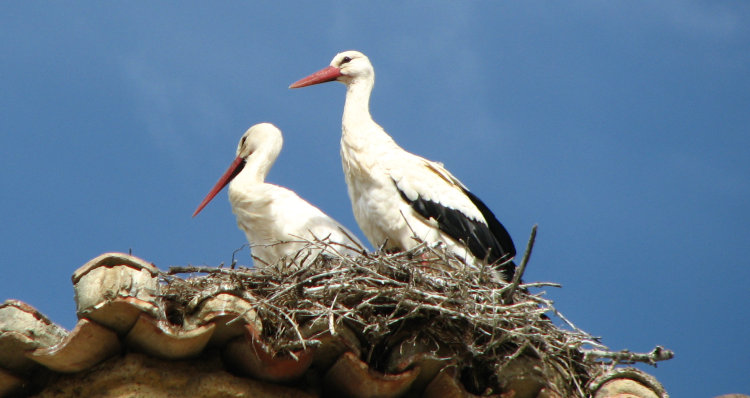Por San Blas las cigüeñas verás, y si lo las vieres, año de nieves.
(Around San Blas day – Feb 3 – you’ll see the storks, and if you don’t it will be a snowy year. Did you notice the subjunctive of “ver”?)
One of many Spanish sayings about the weather, many of them true. This one tells us about the storks coming back from southern latitudes: they’re among the first to fly south, and among the first to return, so they’re a sign of spring, like robins in other parts of the world. But this saying tells us even more: if you don’t see the storks the winter will continue. So maybe we can also consider them groundhogs?
The trick is: many Spanish storks do not migrate. They stay all winter in warmish places like western Spain and even in Madrid. (you can see them in the Casa de Campo). So before you jump up and down when you spot a stork early in February, be sure it isn’t a permanent resident, or a stork on a Mission with a pink or blue bundle in its beak.
Stork trivia: they return to the same nest year after year. The nests are huge and can cause structural damage to church belltowers – but since storks are protected towns cannot just remove the nests. The solution? Reinforce the church towers, often by building metal baskets so the nests rest on the baskets and not on the roof itself. You can sometimes see the metal baskets in fields or by the edge of reservoirs, like in Manzanares el Real near Madrid, or even on lighting fixtures, like by the zoo in Madrid’s Casa de Campo park.
After that sidetrack, back to weather sayings: En febrero el perro busca la sombra. (In February dogs look for shade. This is good to practice your r and rr.) Another sign of spring: dogs lying in the shade because the sun is too hot. Yes, there is usually a week or two of gorgeous weather in Feruary, but don’t be fooled. Winter is not over yet.

